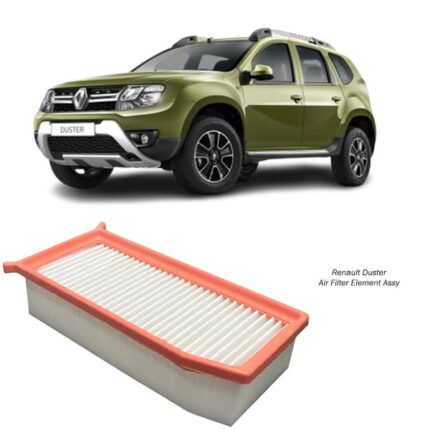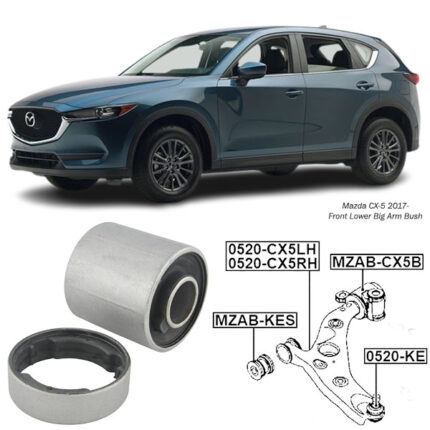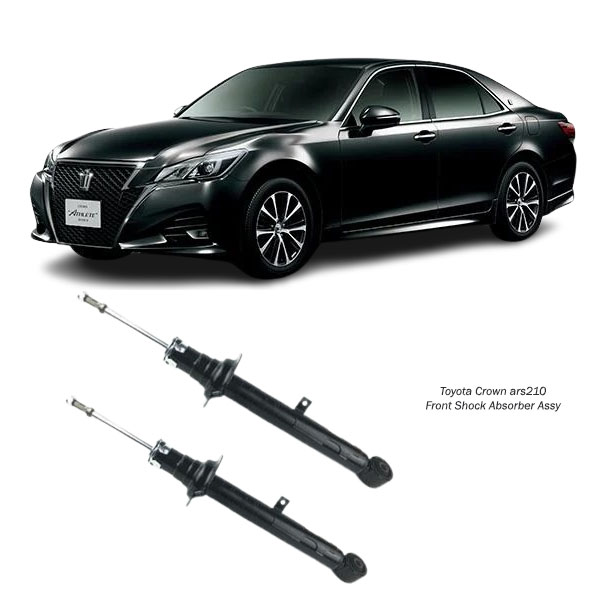-5%
Get Toyota Crown ars210 Front Shock Absorber Assy 551112 / 13 in Kenya
A Front Shock Absorber Assembly is a crucial component of a vehicle’s suspension system, responsible for maintaining stability, comfort, and control while driving. Whether you’re navigating city streets, highways, or off-road terrains, your shock absorbers ensure that your ride remains smooth and safe. Without properly functioning shocks, your vehicle can experience excessive bouncing, poor handling, and increased tire wear.
In this guide, we’ll explore everything you need to know about front shock absorber assemblies, including their components, types, functions, signs of failure, and replacement process.
What is a Front Shock Absorber Assembly? 🤔
A shock absorber is a hydraulic (or gas-filled) device that absorbs and dampens vibrations and shocks from the road surface. It works with the suspension system to provide a stable and comfortable ride.
The front shock absorber assembly refers to the complete unit installed in the front suspension of a vehicle, which includes:
🔹 Shock Absorber (Damper) – The main component that controls suspension movement.
🔹 Coil Spring (in Strut Assemblies) – Supports the vehicle’s weight and absorbs impacts.
🔹 Mounting Brackets and Bushings – Ensure secure installation and reduce vibrations.
🔹 Piston and Hydraulic Fluid – Work together to dissipate kinetic energy from road impacts.
Together, these parts ensure that the front wheels maintain proper contact with the road, improving safety and handling.
How Does a Front Shock Absorber Work? ⚙️
When you drive over bumps, potholes, or rough terrain, your vehicle’s wheels move up and down. Without shock absorbers, this movement would be uncontrolled, leading to excessive bouncing and instability.
Here’s how a front shock absorber functions:
1️⃣ Compression Phase – When the wheel moves upward over a bump, the shock absorber compresses, forcing hydraulic fluid through internal valves to absorb the impact.
2️⃣ Rebound Phase – As the wheel moves back down, the shock absorber extends, controlling the release of energy and preventing excessive bouncing.
3️⃣ Damping Effect – The continuous cycle of compression and rebound reduces vibrations, stabilizing the vehicle and enhancing ride comfort.
By controlling these movements, the shock absorber assembly ensures that the vehicle remains stable, even on uneven surfaces.
Types of Front Shock Absorbers 🚘
There are several types of front shock absorbers, each designed for different driving conditions and vehicle types.
1. Hydraulic (Oil-Filled) Shock Absorbers 🛢️
-
Traditional design using hydraulic fluid to absorb shocks.
-
Provides smooth damping but may fade under heavy use.
2. Gas-Charged Shock Absorbers 🏎️
-
Uses nitrogen gas to prevent fluid foaming, ensuring consistent performance.
-
Ideal for high-speed driving and off-road conditions.
3. Twin-Tube Shock Absorbers 🎭
-
Contains two cylinders: an inner working cylinder and an outer reservoir.
-
Common in most passenger vehicles due to cost-effectiveness.
4. Mono-Tube Shock Absorbers 🎯
-
Features a single tube with a piston and separate gas chamber.
-
Offers better heat dissipation and improved performance.
5. Coilover Shock Absorbers 🏁
-
Integrates the coil spring and shock absorber into one unit.
-
Common in sports cars and off-road vehicles for adjustable ride height.
6. Electronic Shock Absorbers 🎛️
-
Controlled by an onboard computer for adaptive damping.
-
Found in luxury and performance vehicles.
Choosing the right shock absorber depends on your driving style, road conditions, and vehicle requirements.
Signs Your Front Shock Absorbers Need Replacement 🔄
Worn-out or faulty shock absorbers can affect your vehicle’s handling and safety. Look out for these warning signs:
✅ Excessive Bouncing 🏀 – If your car bounces more than usual after hitting a bump, the shocks may be worn out.
✅ Unstable Steering 🎯 – Difficulty maintaining control while driving, especially on uneven roads.
✅ Uneven Tire Wear 👟 – Worn-out shocks cause irregular tire wear, reducing lifespan.
✅ Leaking Hydraulic Fluid 💧 – Visible oil leaks around the shock absorber indicate damage.
✅ Knocking or Clunking Sounds 🔊 – Noises from the suspension suggest loose or broken components.
✅ Longer Braking Distance 🚦 – Worn shocks can increase stopping distance, reducing safety.
✅ Nose Dives and Rear Squats 🔄 – The front of the car dipping during braking or the rear squatting under acceleration signals bad shocks.
Ignoring these signs can lead to poor ride quality, reduced traction, and potential suspension damage.
How Often Should You Replace Front Shock Absorbers? ⏳
The lifespan of shock absorbers varies based on driving conditions and vehicle usage.
🔹 Standard Road Use – Replace every 50,000 – 80,000 km (30,000 – 50,000 miles).
🔹 Rough Terrain & Heavy Loads – Inspect every 20,000 – 40,000 km (12,000 – 25,000 miles).
🔹 Performance Vehicles – May require frequent replacements due to aggressive driving.
Regular inspections during service intervals help identify wear and tear before it becomes a serious issue.
DIY: How to Replace Front Shock Absorbers 🔧
Replacing front shock absorbers requires basic mechanical knowledge and tools. If you’re comfortable working on your vehicle, follow these steps:
Tools Needed:
🛠️ Jack and Jack Stands
🔩 Socket and Wrench Set
📏 Torque Wrench
📌 New Shock Absorbers
🧤 Safety Gloves
Step-by-Step Guide:
1️⃣ Lift the Vehicle – Use a jack and secure it with jack stands.
2️⃣ Remove the Wheel – Unscrew the lug nuts and take off the front wheel.
3️⃣ Locate the Shock Absorber – Identify the upper and lower mounting bolts.
4️⃣ Unbolt the Shock Absorber – Use a wrench to loosen and remove the bolts.
5️⃣ Remove the Old Shock – Carefully take out the worn-out shock absorber.
6️⃣ Install the New Shock – Position it correctly and secure the mounting bolts.
7️⃣ Reattach the Wheel – Tighten the lug nuts and lower the vehicle.
8️⃣ Test Drive – Check for any unusual noises or handling issues.
If you’re unsure about replacing shocks yourself, it’s best to seek professional help.
Benefits of Replacing Worn Shock Absorbers ✅
Installing new shock absorbers improves several aspects of your vehicle:
🚀 Better Handling & Stability – Enhances control during turns and braking.
🛑 Shorter Braking Distance – Reduces stopping distance for safer driving.
💨 Smoother Ride Quality – Minimizes vibrations and road impacts.
🛡️ Increased Tire Lifespan – Prevents uneven wear, saving money on tires.
🔧 Reduced Suspension Wear – Protects other suspension components from damage.
Upgrading to high-quality shock absorbers can significantly improve ride comfort and safety.
Choosing the Right Front Shock Absorbers 🏆
When selecting shock absorbers for your vehicle, consider:
✔️ OEM vs. Aftermarket – OEM parts match factory specs, while aftermarket options offer performance upgrades.
✔️ Driving Conditions – Choose heavy-duty shocks for off-road or high-speed driving.
✔️ Compatibility – Ensure the shock absorbers fit your vehicle model (e.g., Toyota Prado 120/150 series).
✔️ Warranty & Brand Reputation – Trusted brands offer better durability and reliability.
Conclusion 🏁
Front shock absorber assemblies are essential for maintaining a smooth, stable, and safe ride. Regular inspections and timely replacements help prevent costly repairs and enhance driving comfort. Whether you’re replacing worn shocks or upgrading for better performance, investing in high-quality shock absorbers is always a good decision.
Follow us on Facebook for more parts.






Reviews
Clear filtersThere are no reviews yet.